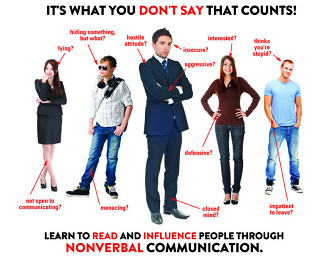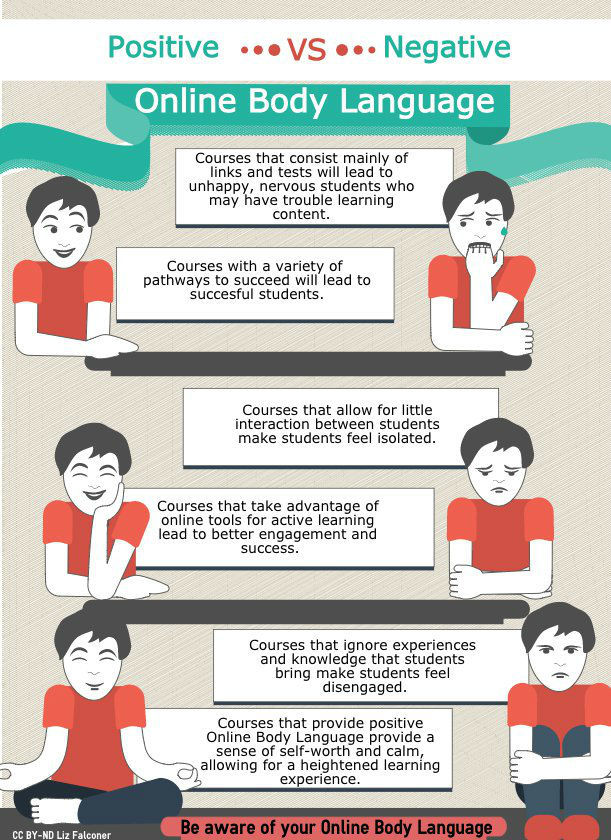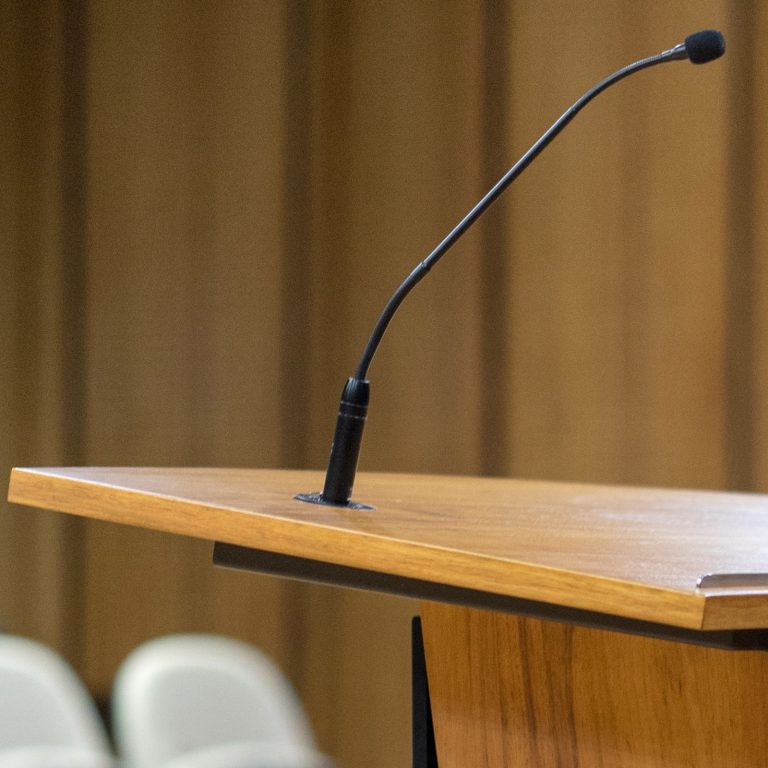Body Language In Negotiation
In the high-stakes game of negotiation, every move counts. But did you know that it’s not just what you say that matters? Body language can speak volumes in the art of negotiation. Welcome to the world of body language in negotiation, where subtle cues can make a big impact.
When it comes to negotiations, it’s not just about the words you choose—it’s how you use your body. Our body language can convey confidence, assertiveness, and power. Learning to read and control your own body language, as well as understanding the signals of others, can give you a winning edge at the negotiating table.
So, put on your detective hat and get ready to decode the secret language of body movements, gestures, and facial expressions in negotiation. Whether you’re a seasoned pro or just starting out, understanding the nuances of body language can help you navigate the complexities of negotiation and come out on top. Get ready to master the art of nonverbal communication in negotiation and take your skills to the next level. Let’s dive in!
Harnessing effective non-verbal communication is vital in negotiation. Maintain eye contact to display confidence and actively listen. Use open body posture to appear approachable. Lean in slightly to demonstrate interest. Mirroring gestures can create rapport. Be aware of your facial expressions to convey sincerity. Mastering body language can help you navigate negotiations successfully, even without saying a word.

Understanding Body Language in Negotiation: Decoding Nonverbal Cues
When it comes to negotiation, the words we say are just one part of the equation. Our body language plays a significant role in conveying our intentions, emotions, and power dynamics. Understanding and interpreting body language cues can give you a competitive edge in any negotiation. In this article, we will explore the fascinating world of body language in negotiation, uncovering the secrets behind nonverbal communication to help you become a more effective negotiator.
The Power of Eye Contact
Eye contact is a powerful form of nonverbal communication that can establish trust, convey confidence, and assert dominance in a negotiation. Maintaining good eye contact shows active engagement and signals that you are attentive to the other person’s words and expressions. When negotiating, make sure to maintain consistent eye contact, but be aware of cultural differences and adjust accordingly. However, excessive or intense eye contact can be perceived as intimidating or aggressive, so strike a balance that creates a comfortable and cooperative atmosphere.
Additionally, pay attention to the direction of the other person’s gaze. Where someone looks can reveal their level of interest or engagement. If they consistently avoid eye contact or look away while speaking, it may indicate discomfort, dishonesty, or lack of confidence. On the other hand, if their gaze is focused and direct, it signifies sincerity and conviction.
In negotiation, eye contact provides invaluable insights into the other person’s feelings, intentions, and receptiveness to your proposals. Mastering the art of maintaining appropriate eye contact can help you build rapport, establish credibility, and ultimately achieve better outcomes.
Interpreting Gestures and Posture
Gestures and posture are visual cues that reveal a negotiator’s level of confidence, interest, and power dynamics. Understanding these cues can help you assess the other person’s emotional state and adapt your approach accordingly. For instance, crossed arms and a closed-off posture indicate defensiveness, while open arms and an upright posture suggest receptiveness.
Hand gestures can also convey meaning and intention. For example, open-handed gestures can create a sense of transparency and trust, while pointing or aggressive finger gestures may be perceived as confrontational. Mirroring the other person’s gestures can help establish rapport and build a connection, signaling that you are on the same wavelength.
It is crucial to be aware of your own posture and gestures as well. Projecting confidence, maintaining an open posture, and using purposeful, non-distracting hand gestures can enhance your credibility and influence in the negotiation process. By being conscious of these nonverbal cues, you can project the right image and effectively communicate your message.
Understanding Facial Expressions
Facial expressions are a window into our emotions and thoughts. They can reveal if someone is genuine, excited, or skeptical during a negotiation. Observing microexpressions – fleeting facial expressions that reveal true emotions – can help you gauge the other person’s responses and adjust your approach accordingly.
Positive facial expressions such as smiling, nodding, and raised eyebrows indicate agreement, interest, and receptiveness. However, individuals may mask their true emotions, so it is essential to be attentive to inconsistencies between body language and verbal cues. For instance, crossed arms and a frowning face may indicate disagreement or skepticism, even if the person says otherwise.
Building rapport and establishing trust involves aligning your facial expressions with your words. Displaying sincere, genuine emotions can create a positive atmosphere and encourage collaboration and a mutually beneficial outcome. By being observant and responsive to facial expressions, you can adapt your negotiation strategy and communicate more effectively.
Mastering Vocal Cues
While body language primarily focuses on nonverbal cues, vocal cues also play a significant role in negotiation. Tone, pitch, volume, and speed of speech can convey various emotions and attitudes.
Paying attention to the other person’s voice can give you insights into their emotional state, confidence level, and assertiveness. A soft, hesitant voice may indicate insecurity or lack of conviction, while a loud, forceful voice can come across as aggressive or domineering. Mirroring the other person’s vocal cues, such as matching their pace or volume, can foster a sense of connection and understanding.
Being aware of your own vocal cues is equally important. Speaking with clarity, confidence, and a calm tone can enhance your credibility and influence in the negotiation. Additionally, using pauses strategically can create a more impactful message and allow time for reflection.
The Importance of Space
Proxemics, the study of personal space, is another crucial aspect of body language in negotiation. How we use and perceive space can reveal power dynamics and comfort levels.
In negotiation, the physical distance between you and the other person can influence how comfortable and cooperative the conversation becomes. Invading someone’s personal space can be seen as intrusive or confrontational, while excessive distance can be interpreted as disinterest or lack of engagement.
Being aware of cultural differences is vital as well. Different cultures have varying comfort levels regarding personal space, so adjusting accordingly shows respect and cultural sensitivity.
Building Rapport and Trust
Rapport and trust are essential elements in any negotiation. Developing a positive connection with the other person can help overcome barriers and facilitate open communication and collaboration.
Active listening, mirroring body language, and using empathetic gestures can have a profound impact on building rapport. Reflecting the other person’s expressions, maintaining an open body posture, and nodding at appropriate times indicate that you are engaged and empathetic.
Trust is established through consistent, congruent behaviors. By aligning your words and actions, demonstrating integrity, and being transparent, you can cultivate an environment of trust that fosters constructive negotiation and win-win outcomes.
Benefits of Understanding Body Language in Negotiation
Mastering the art of body language in negotiation can benefit you in various ways:
- Enhance your communication skills and understanding of others
- Improve your ability to assess and respond to the other person’s emotions and intentions
- Build trust and rapport, leading to more productive and cooperative negotiations
- Influence power dynamics and assert your position effectively
- Identify possible deception or hidden agendas
- Create a positive and conducive negotiation atmosphere
Tips for Mastering Body Language in Negotiation
Here are some tips to help you improve your body language skills in negotiations:
- Practice active listening and focus on understanding the other person’s perspective.
- Seek out opportunities to observe and analyze body language in everyday interactions.
- Record and review videos of your own negotiations to identify areas for improvement.
- Stay aware of cultural differences and adapt your body language accordingly.
- Take note of your own nonverbal cues and consciously work on projecting the desired image.
- Stay open-minded and flexible in your approach, mirroring the other person’s energy and nonverbal cues.
- Continuously educate yourself on the science behind body language and nonverbal communication.
Conclusion
Effective negotiation involves more than just the words we speak. Body language acts as a silent, yet powerful, communication tool that can make or break a negotiation. Understanding and mastering body language cues can help you decode hidden meanings, establish trust, and influence outcomes. By paying attention to eye contact, gestures, posture, facial expressions, vocal cues, and personal space, you can become a more effective negotiator. Remember, it’s not just what you say, but how you say it that truly matters in negotiation.
Key Takeaways: Body Language in Negotiation
- Good eye contact shows confidence and active listening.
- Open posture projects openness and willingness to negotiate.
- Nodding and smiling conveys agreement and encourages cooperation.
- Using gestures sparingly helps maintain professionalism.
- Pay attention to the other party’s body language for valuable insights.
Frequently Asked Questions
When it comes to negotiation, body language plays a crucial role in communicating your intentions and understanding the other party’s stance. Understanding body language cues can give you an advantage in negotiating effectively. Below, we answer some common questions about using body language in negotiation.
1. How does body language impact negotiation outcomes?
Body language can greatly affect the outcome of a negotiation. Nonverbal cues such as facial expressions, posture, and gestures can convey confidence, trustworthiness, and assertiveness. Positive body language can help build rapport, establish trust, and increase the likelihood of reaching a mutually beneficial agreement. On the other hand, negative body language, such as crossed arms or lack of eye contact, can create barriers and lead to misunderstandings or a breakdown in communication.
Being aware of your own body language and understanding how to interpret the signals of others can help you adjust your approach and enhance communication during a negotiation. By aligning your body language with your verbal message, you can reinforce your points and build credibility, leading to better negotiation outcomes.
2. How can I project confidence through body language in a negotiation?
Confidence can be projected through various body language cues. Start with good posture by sitting or standing tall, as slouching can make you appear less confident. Maintain eye contact, as it shows that you are attentive and engaged. Use open and expansive gestures to demonstrate openness and confidence. Avoid crossing your arms or fidgeting, as these may signal defensiveness or nervousness.
Another important aspect is controlling your facial expressions. A relaxed and pleasant expression can put the other party at ease and help foster a positive negotiation environment. Additionally, speak in a clear and confident manner, using a steady tone. By paying attention to your body language and consciously projecting confidence, you can influence the perception others have of you during a negotiation.
3. How can I interpret the other party’s body language during a negotiation?
Interpreting the other party’s body language can provide valuable insights into their thoughts and feelings during a negotiation. Look for signs of engagement, such as leaning forward or nodding, which indicate interest and agreement. Facial expressions can also reveal emotions like surprise, frustration, or satisfaction.
However, body language should always be considered in context. For example, someone crossing their arms might simply be cold or trying to maintain a comfortable posture. It’s important to observe multiple cues and consider them collectively before making conclusions. To become more skilled at interpreting body language, practice observing people’s nonverbal signals in various situations and pay attention to patterns and consistencies.
4. How can I adjust my body language to build rapport with the other party?
Building rapport is crucial in a negotiation as it promotes trust and cooperation. You can adjust your body language to establish rapport by mirroring the other party’s gestures and postures to create a sense of similarity and connection. For example, if they lean forward or use hand gestures, you can subtly do the same.
Active listening is also vital for building rapport. Show interest by maintaining eye contact, nodding, and displaying open body language. This conveys that you value the other party’s opinions and ideas. Use positive facial expressions and smile genuinely when appropriate. By adapting your body language to be in sync with the other party, you can foster a more harmonious negotiation environment.
5. Can body language help in resolving conflicts during negotiation?
Body language can play a significant role in resolving conflicts during a negotiation. When tensions rise, maintaining open and non-threatening body language can help defuse the situation. By staying calm and composed, using relaxed gestures, and staying open to the other party’s perspective, you can prevent the conflict from escalating.
Active listening and showing empathy through your body language can also contribute to conflict resolution. For example, leaning in slightly and nodding can demonstrate that you are actively trying to understand the other party’s point of view. Avoid defensive or aggressive body language, as it can intensify conflicts and hinder the negotiation process. Instead, focus on creating a safe and respectful space where both parties can express their concerns and work towards a resolution.
Summary
In negotiation, body language plays an important role in communication. It can reveal hidden emotions, establish rapport, and influence outcomes. Eye contact, posture, and gestures are some key elements of body language to consider during negotiations.
Effective body language can help build trust and understanding between negotiators. Maintaining eye contact shows attentiveness and confidence. Open and relaxed postures convey a sense of openness and cooperation. Making appropriate gestures can enhance the clarity and impact of your message.
On the other hand, negative body language such as crossing arms, avoiding eye contact, or fidgeting can signal defensiveness or lack of interest. Being aware of your own body language and observing the body language of others can give you valuable insights that can improve your negotiation skills. By paying attention to these nonverbal cues, you can enhance your effectiveness as a negotiator and achieve better outcomes.

